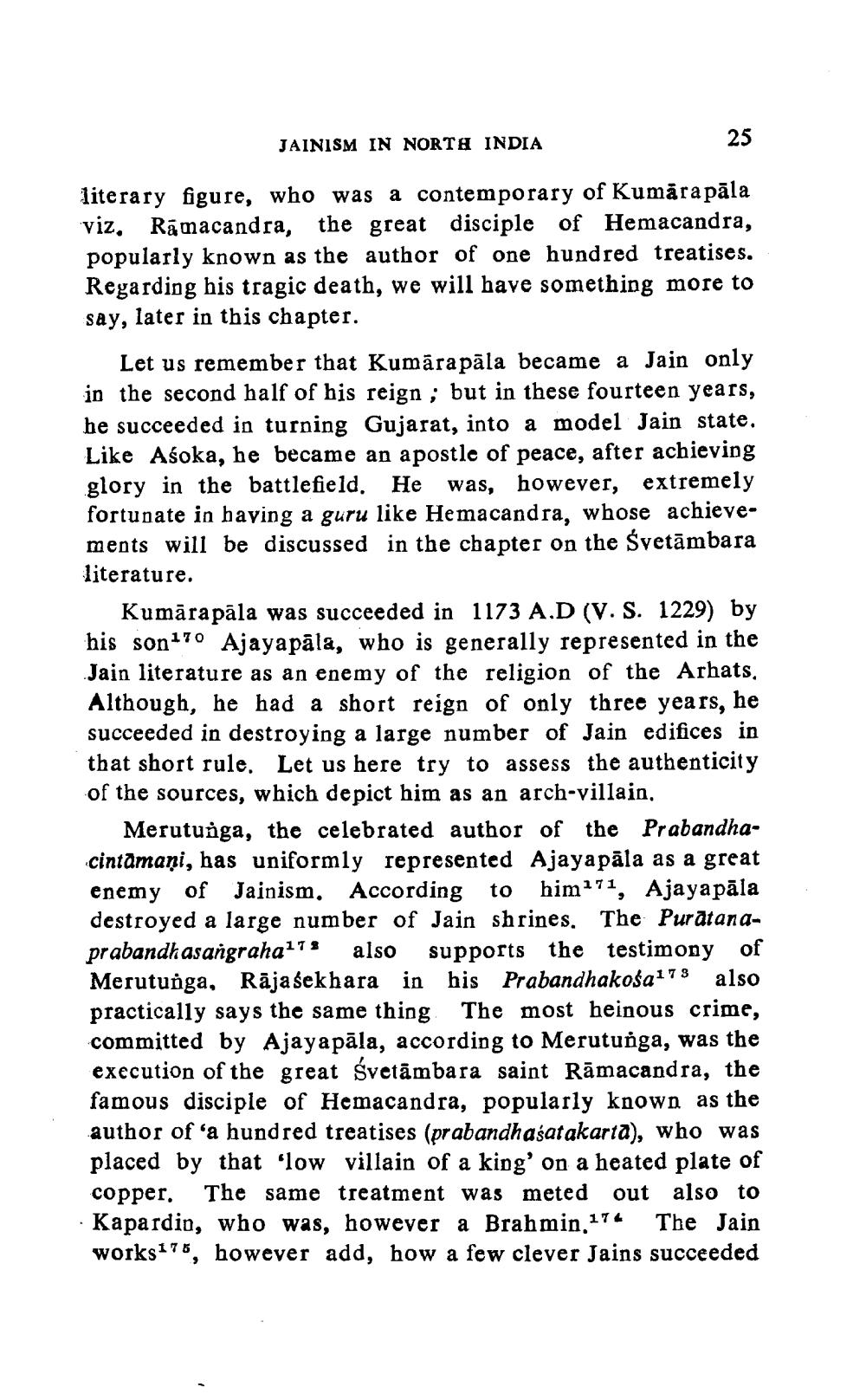________________
JAINISM IN NORT: INDIA
25
literary figure, who was a contemporary of Kumāra pāla viz, Rāmacandra, the great disciple of Hemacandra, popularly known as the author of one hundred treatises. Regarding his tragic death, we will have something more to say, later in this chapter.
Let us remember that Kumāra pāla became a Jain only in the second half of his reign ; but in these fourteen years, he succeeded in turning Gujarat, into a model Jain state. Like Asoka, he became an apostle of peace, after achieving glory in the battlefield. He was, however, extremely fortunate in baying a guru like Hemacandra, whose achievements will be discussed in the chapter on the Śvetāmbara literature.
Kumārapāla was succeeded in 1173 A.D (V. S. 1229) by his son 170 Ajayapāla, who is generally represented in the Jain literature as an enemy of the religion of the Arhats, Although, he had a short reign of only three years, he succeeded in destroying a large number of Jain edifices in that short rule. Let us here try to assess the authenticity of the sources, which depict him as an arch-villain.
Merutuiga, the celebrated author of the Prabandhacintamani, has uniformly represented Ajayapāla as a great enemy of Jainism. According to him171, Ajayapāla destroyed a large number of Jain shrines. The Puratanaprabandhasangrahalis also supports the testimony of Merutunga, Rājasekhara in his Prabandhakośa17s also practically says the same thing The most heinous crime, committed by Ajayapāla, according to Merutunga, was the execution of the great svetāmbara saint Rāmacandra, the famous disciple of Hemacandra, popularly known as the author of 'a hundred treatises (prabandhasatakarta), who was placed by that 'low villain of a king' on a heated plate of copper. The same treatment was meted out also to Kapardin, who was, however a Brahmin,174 The Jain works176, however add, how a few clever Jains succeeded




